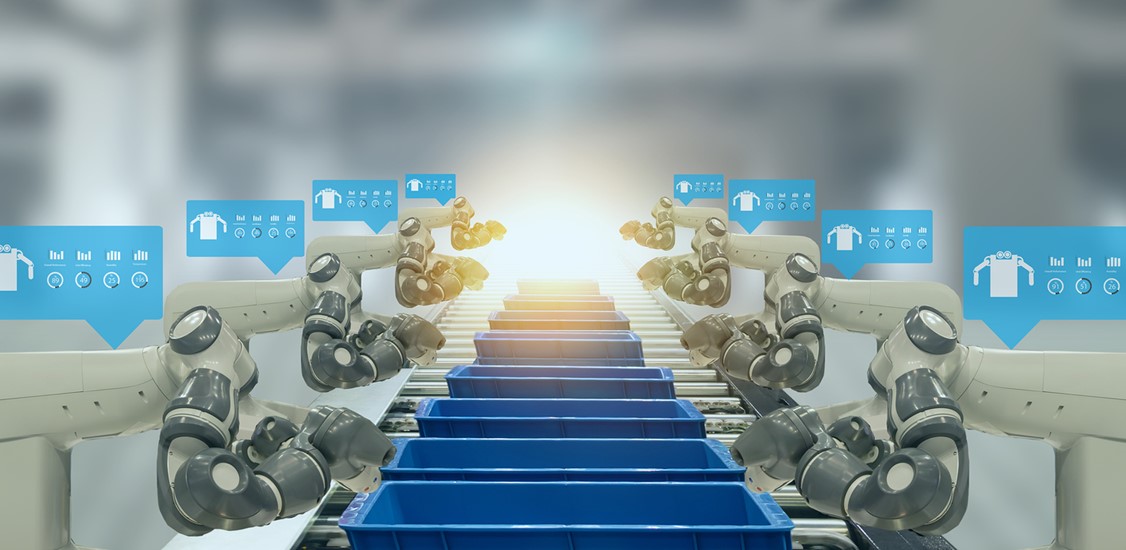As the demand for larger-scale industrial operations increases, so too does the need for industrial automation, especially in production plants. Operators are leveraging the latest technology available as they continually seek maximized profit and the automation of time-consuming processes in order to remain competitive in a fast-moving industry. In fact, it is estimated that the number of industrial robots worldwide continues to grow by around 14% annually.
Automation is also one of the significant factors behind the new digital transformation, coined Industry 4.0. This term is defined as a new generation of technology and provides operators with a greater level of control and efficiency along with access to data in real-time. Adopting the right Industrial Internet of Things (IIoT) solution can pave the way for this innovation, and can transform a business, financially and creatively.
The business potential of effective automation
Automated machinery can save time, increase productivity and over a period of time, can generate a significant profit with its multi-tasking functionality, creating new business opportunities and ideas through maximised operations.
With a reputable IIoT solution applied to this machinery, it is easier than ever to routinely monitor operations and identify any issues that are negatively impacting performance in an automated workplace. This allows for optimization across a large production area, where it can often be difficult to have the visibility necessary to monitor large amounts of machinery simultaneously. Due to this, operators can easily tailor their business needs to align with the market, therefore keeping up with rapid competition and industry trends.
A fully customizable IIoT solution
In order for an IIoT toolkit to be this readily effective in automated machinery management, it has to be adaptable, application-ready, and most of all, have a secure, built-in connection working at all times. Without this, the expensive machinery associated is prone to experiencing latency issues, reduced working capacity and is at risk of system malfunction, for example, due to the lack of predictive maintenance. Specifically, leveraging a unique, end-to-end ‘application ready’ software will provide fully customizable options, and reliable solutions for both large-scale and small-scale automation set-ups.
One of the main benefits that a IIoT toolkit can offer is the flexibility to utilize cloud services, which can enable the deployment of predictive maintenance, real-time monitoring, self-optimization, fleet management and asset tracking. Completely personalized for each respective customer and paired with this technology, the toolset allows for seamless customization and flexibility. Using AI-enabled predictive analytics solutions, businesses can leverage growing data volumes, and gain insights into productivity, knowing what to change and what to maintain in order to gain full productivity across their operations, allowing for increased return on investment (ROI) and more satisfaction with their automated products.
Furthermore, a purpose built IIoT toolkit can be utilized to help customers invest in technology that is crucial for keeping up with the upcoming Industry 4.0 competition, and to provide a solid solution that directly helps customers to excel in their businesses. Offering a IIoT toolkit that works to enhance cutting-edge automation furthers potential for success financially. The profitable benefits of a IIoT solution are endless, and this can result in reduced total cost of ownership and day-to-day fees after the initial implementation, accelerated time-to-market, product lifecycles, and in many cases, the increased adoption of further automation on a large-scale.
Automated applications that deliver on-demand
Industrial companies should focus on investing in a cost-effective and scalable IIoT solution that can easily integrate with their existing machines and help them master the complex challenges that digital transformation presents. Therefore, industries including automotive, transportation, medical or smart energy can deploy this to effectively implement individual solutions to cover industry-specific requirements. Operators will be able to maintain an overview of information, despite exponentially growing data volumes. Subsequently, productivity in manufacturing can be optimized through real-time quality inspection and companies will also have access to improved asset management, predictive maintenance and comprehensive data insights to make more informed strategic business decisions.
Industrial companies may be seeking a solution that can connect an entire corporate team of service technicians - via their devices while on the move - to the company’s control center and with its clients. An IIoT solution can ensure that technicians have access to all information they require at all times. This enables work to be conducted seamlessly, prohibits breakdowns and optimizes performance. This will also simplify the technicians’ communications with the headquarters and ensure dispatchers have full visibility of their technicians’ day-to-day operations.
Enhancing the medical sector
One example of IIoT software being put into action can be the integration of predictive maintenance in automated medical equipment for pharmaceutical producers. The solution can ensure medical devices in the embedded cloud can be maintained in real-time or, if necessary, replaced promptly, saving lives in the process.
Additionally, IIoT software allows potential faults to be worked on before hospital operations or general usage. The solution works by transmitting data that must be collected, stored and analysed. The evaluated measured values and diagnostic data are signalled directly to the service center or the device manufacturer. Thanks to the solution, the medical device can automatically call for a service technician before a defect can occur. This saves costs, reduces the risk of failure, and thus makes the networked operation of medical equipment safer. This solution can be applied to any industrialized sector, as the use of an IIoT solution enables innovative medical technologies to work to their full capability.
As the age of Industry 4.0 sweeps the industrial sector, it is becoming increasingly important that operators leverage the most suitable technology at their disposal to keep up with the rising demands and to ensure they remain competitive in the medium to long-term. Equipment suppliers and manufacturers can see profitable results by investing in the most effective IIoT solution, to build smarter machines, enhance their business models and create new business opportunities. This will also ensure that problems are rapidly identified and fixed to prevent a loss of profit and to ensure that productivity is maximized.






















